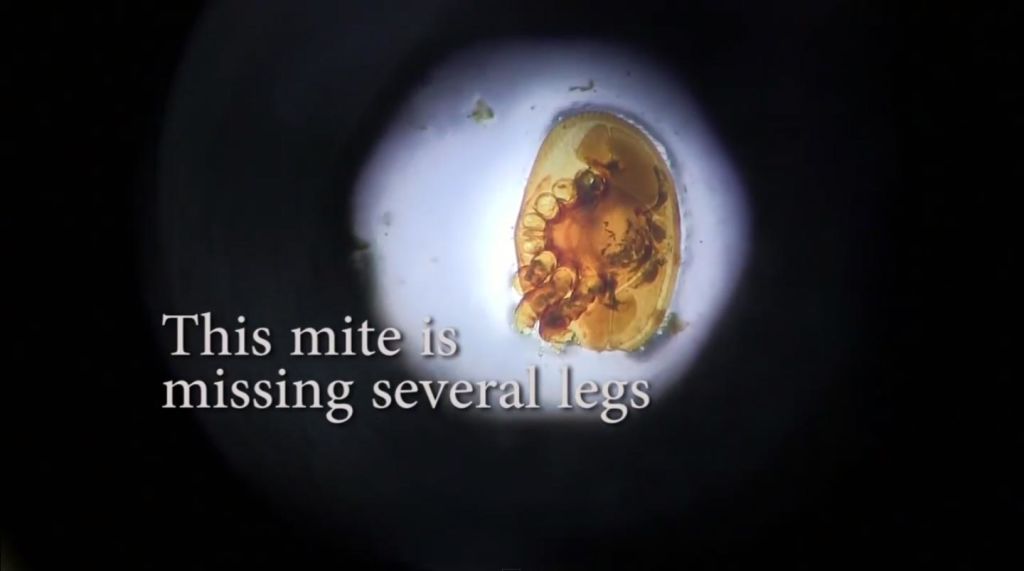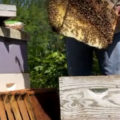This is the video from February’s SIBA meeting. Dr. Greg Hunt of Purdue University visited us to lead a discussion on the effects of pesticides on bees. He is also studying mite-biting bees. While mites feed on bees and their larva, RNA viruses such as the deformed wing virus (DWV) spread to bees. A significant mite infestation will lead to the death of a honey bee colony, usually in the late autumn through early spring. Hunt’s bees have some of the VSH (Varroa Sensitive Hygiene) trait, but also have bitten the legs off many of the mites. See these mites under a microscope for yourself in the video.
Notice the time codes below? You can jump to that time in the video to hear more about that topic. If you actually view this video on YouTube, you can click the time codes to automatically jump there. Click here to jump to the video on YouTube.
Highlights of the Clothianidin pesticide
- What’s the fastest route from the pesticide to the bee?
- 4ppb Clothianidin in the bees, highly contaminated (toxic to bees)
- Clothianidin is water-soluble. When it rains, problem goes away for a while
- 99% of the corn is treated. 70-80% of soybeans are treated
- Growers don’t have many choices in buying untreated seed
- Sub-lethal effects still in investigation
- Air-powered planters are a problem in that they blow the talc all over
- Morale of the story… if you are around agricultural, this is a very real problem for you
- Talk to the farmer to get a heads up and you can try to keep your bees inside
- You can put sprinklers out top make the bees think it’s raining
- 12:35 during pollen season bees cycle pollen rapidly
- 12:56 Pollen feeding experiment
- 13:36 Neonicotinoids, good for us, bad for the bees
Highlights of Mites, and bees that bite them! 16:57
- Two traits in bees that are important to mite resistance (Grooming behavior, and VSH “Varroa Sensitive Hygiene)
- 18:13 The proportion of chewed mites is a reliable measure of grooming behavior
- 19:46 Look at these chewed mites under a microscope!
- Not sure yet how repeatable this is based on current data
- 26:39 Can you do this yourself in your own apiary?
- 26:58 The front legs on a mite are called pedipalps.
- Generally, Italians make a lot of brood… so they have a lot of mites 🙁
- 30:40 If mites are out of hand, Dr. Hunt’s group treats with Api-Gard (syntehtic Thymol) and they re-queen.
- 33:52 Look for the VSH (Varroa Sensitive Hygiene) trait in your bees! (low mite reproduction)
- 37:12 Before mites, typical failure rate of hives was around 10%, now we’re losing about 30%
- 37:50 How to use Oxalic acid, a naturally occurring acid in plants, effective for mite control when bees are broodless.
- 43:34 Deformed wing virus and the interaction with bees
- 45:20 Using drone frames to deal with mites
- 47:26 Last look at various mites under a microscope





Leave a Reply